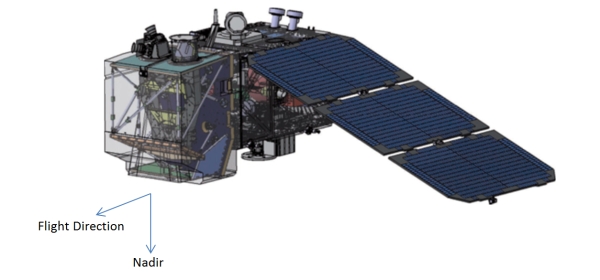The SENTINEL-2 mission consists of two identical satellites, SENTINEL-2A and SENTINEL-2B, that were launched using the European VEGA launcher. Each of these satellites weighs approximately 1.2 tonnes.
The satellite lifespan is 7.25 years, which includes a 3 month in-orbit commissioning phase. Batteries and propellants have been provided to accommodate 12 years of operations, including end of life de-orbiting manoeuvres.
The two SENTINEL-2 satellites operate simultaneously, phased at 180° to each other, in a sun-synchronous orbit at a mean altitude of 786 km. The position of each SENTINEL-2 satellite in its orbit is measured by a dual-frequency Global Navigation Satellite System (GNSS) receiver. Orbital accuracy is maintained by a dedicated propulsion system.
The SENTINEL-2 satellite system was developed by an industrial consortium led by Astrium GmbH (Germany). Astrium SAS (France) is responsible for the MultiSpectral Instrument (MSI).
The MSI works passively, by collecting sunlight reflected from the Earth. New data is acquired by the instrument as the satellite moves along its orbital path. The incoming light beam is split via a beam-splitter and focused onto two separate focal plane assemblies within the instrument; one for Visible and Near-Infra-Red (VNIR) bands and the other one for Short Wave Infra-Red (SWIR) bands. The spectral separation of each band into individual wavelengths is accomplished by stripe filters mounted on top of the detectors.

Figure 1: Schematic View of the Deployed SENTINEL-2 Spacecraft (image credit: EADS Astrium)
The optical design of the MSI telescope allows for a 290 km Field Of View (FOV).
A shutter mechanism prevents the instrument from direct illumination by the sun in orbit and to avoid contamination during launch. The same mechanism functions as a calibration device by collecting the sunlight after reflection by a diffuser.